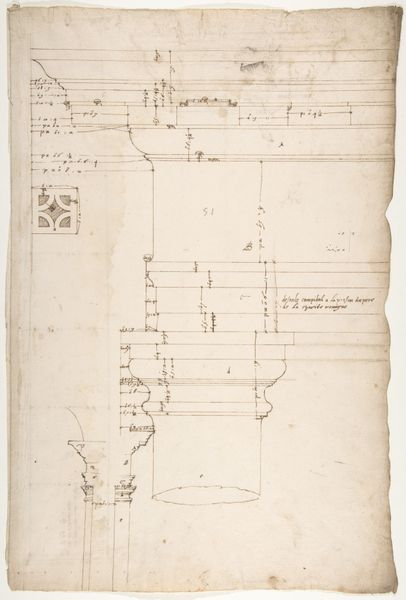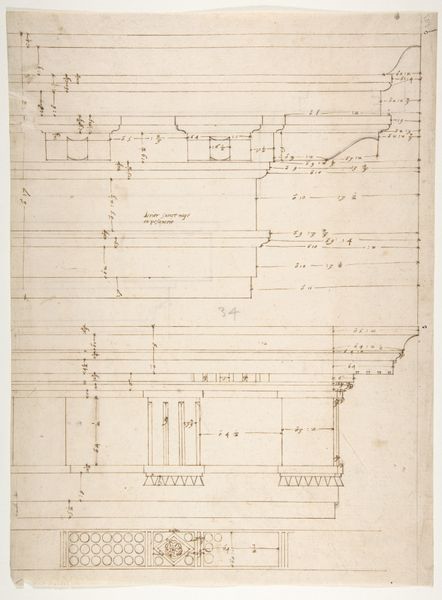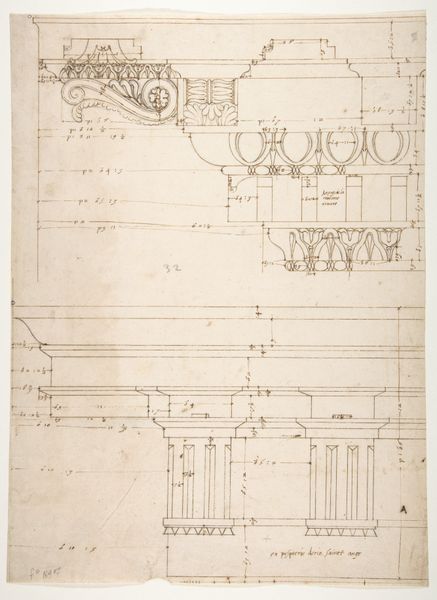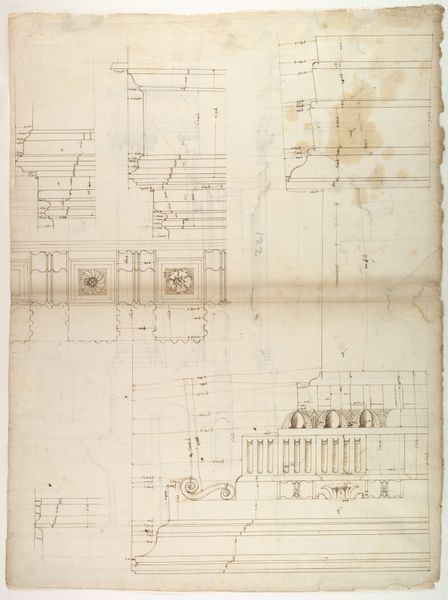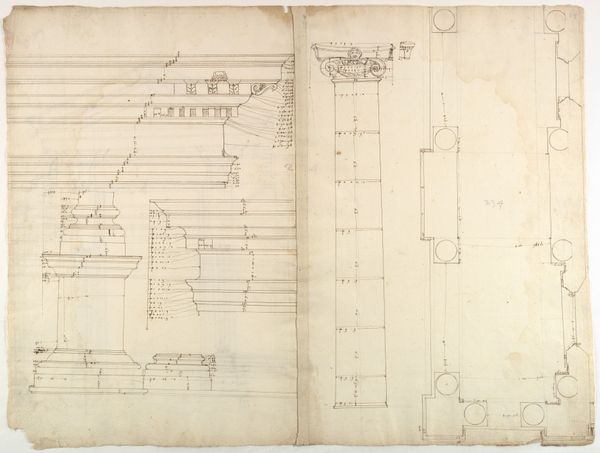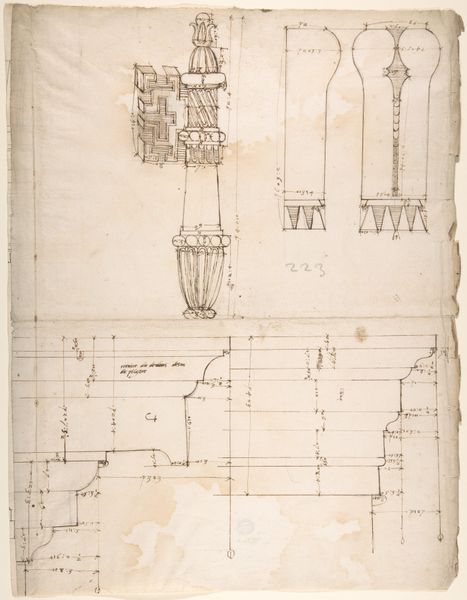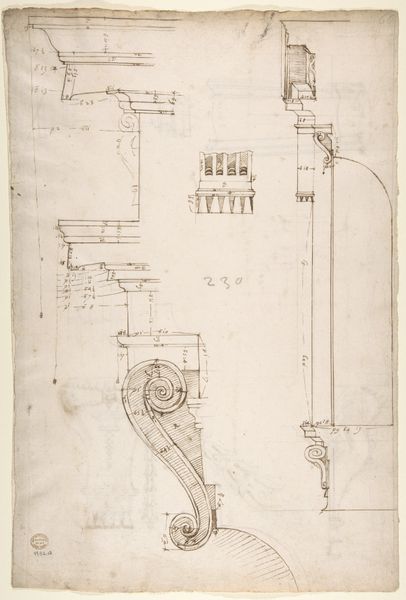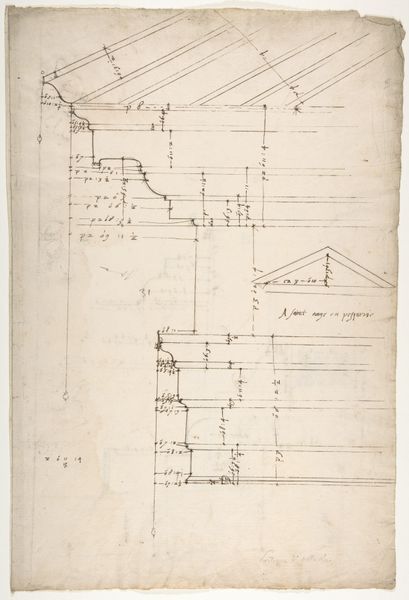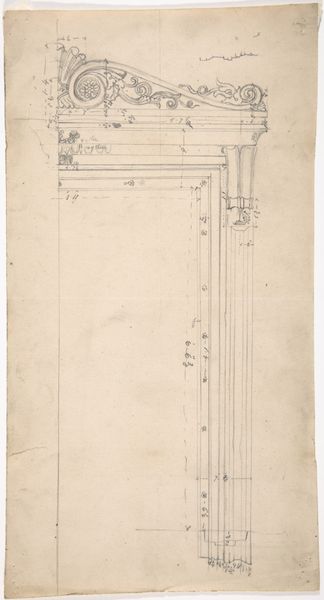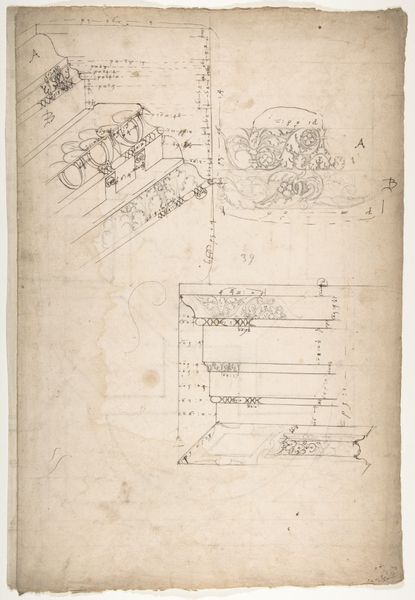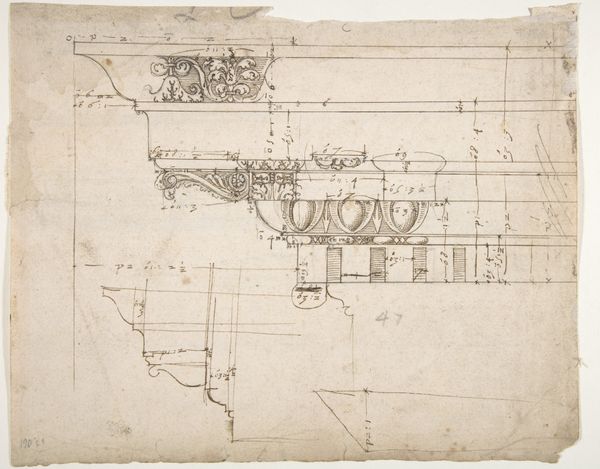
Palazzo Massimo alle Colonne, entablature, elevation (recto); Portico, Doric capital and entablature, elevation and Unknown, Corinthian cornice, elevation (verso) 1500 - 1560
0:00
0:00
drawing, print, paper, ink, architecture
#
drawing
# print
#
etching
#
paper
#
11_renaissance
#
ink
#
architecture
Dimensions: sheet: 17 5/16 x 11 7/16 in. (44 x 29 cm)
Copyright: Public Domain
Curator: Looking at this intricate drawing, one can immediately tell it's no ordinary sketch. It is entitled “Palazzo Massimo alle Colonne, entablature, elevation (recto); Portico, Doric capital and entablature, elevation and Unknown, Corinthian cornice, elevation (verso)” and it dates from sometime between 1500 and 1560, anonymous artist. It combines ink drawing and etching. What are your initial thoughts? Editor: Well, first off, the sheer precision! The line work feels so deliberate, each mark purposeful, though the paper looks rather worn. I am also seeing a lot of calculations and annotation on all the building's structures... were these working documents, or something else? Curator: Indeed. These plans would have been critical for visualizing the design. The Renaissance rediscovery of classical architecture placed great emphasis on mathematically precise and harmonious proportions. I'm curious, what associations do these architectural elements conjure for you? Editor: Thinking about it, there's a tangible human effort embedded in the physical creation of the drawing, even before the building went up. Look at the time it took to mark up and build! Curator: The classical orders in the building represent something bigger, though; they symbolize ideas like balance, reason, and order, aspirations for civilization. Even in its creation it shows those things you pointed out in its process. Editor: Right, but the choice of material also matters. Stone—it's permanent, authoritative. It’s not just about a beautiful facade; it speaks to power, both in terms of labor and resource control. The whole endeavor signifies wealth, civic ambition. Curator: Absolutely. By meticulously documenting these elements, the artist is really capturing and encoding those same ambitions into paper, the permanence into a reproducible media. Editor: Seeing the whole image—drawing, etchings and writing on this well aged paper—makes me reflect on its status: working draft, and later archival record of past architectural techniques. That seems important. Curator: Well said. Considering its classical foundation, precise notations and its presence at The Met, it transcends its utility to be a profound embodiment of memory of power through representation and labor, wouldn’t you say? Editor: I agree, but let's not forget that ultimately this remains a testament to material choices and working processes deeply rooted in social conditions that extend past artistic will. Curator: I couldn’t agree more.
Comments
No comments
Be the first to comment and join the conversation on the ultimate creative platform.
